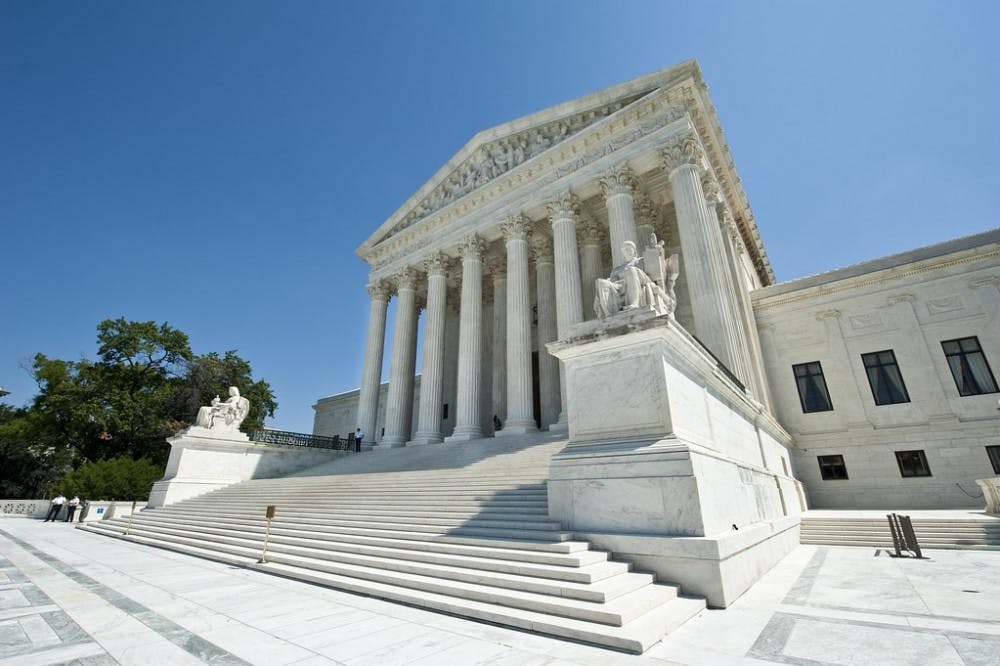On April 19, the Supreme Court refused to hear the case of Jamel Knox vs. the Commonwealth of PA, setting a dangerous precedent that could sanitize hip–hop. The case, which centers on local Pittsburgh rap sensation Jamel Knox aka Mayhem Mal, doesn’t slot easily into the tropes that trail hip–hop. Knox isn’t fighting drug charges nor weapon possession—he’s fighting for his right to free speech, something the criminal justice system now believes rappers shouldn’t have.
In 2014, Knox was charged with terrorist threat and witness intimidation for the 2012 song “Fuck the Police,” which, in the midst of calling out specific Pittsburgh police officers, is a cry for justice. The video, which was never shown in local Pittsburgh courts nor viewed by any Supreme Court justice, situates the song against a reel of local news clips and clippings about rampant police brutality in the city. This is the same city famous for the death of Antwon Rose, where an armed white officer shot the unarmed 17 year old despite a tenuous–at–best link to a drive–by shooting. So, while the song does, in fact, include threats, they most likely acted as an extended metaphor, putting the Pittsburgh police under the same fears and pressures black men in the city have felt since the shooting.
Several rappers have echoed this sentiment, priming the Supreme Court with a document explaining the history of rap both as a genre and work of art. Penned by Chance the Rapper, 21 Savage, and a slew of other A-listers, it notes that Knox’s work, like all rap, was “never meant to be read as bare text on the page ... but heard with music, rhythm, melody, and emotion.”
Niko Simpkins (E’22), who goes by the rap moniker NiSPLASH, feels the same, explaining that hip-hop is a reactionary form of storytelling, and should be treated as such. After all, rappers exist as the modern answer to poets, employing all the literary devices we were told made a genius in our high school English classes—meter, rhythm, synecdoche, internal rhyme—to spin yarns about their lives, evens if that sometimes mentions sex and casual drug use. At its worst, rap is fun and candid. At its best, rap is confessional and condemning, even spawning its own analytical anthology.
“With rap you’re not only telling your story -- you can use it as a vehicle to tell other people’s stories, and that’s because not everybody can rap. Rap is a form of expression, facing out towards things that are happening,” says Simpkins.
Simpkins also believes this new court precedence exists as a form of racially tinged censorship, combining an inherent bias against hip–hop with the systemic roots of racism in this country. The face of successful rap in America is a black one. At press time, nine out of the 10 artists in the top 10 on the Billboard Hip–Hop chart are black, with the only exception being Post Malone, whose place in the genre has been much contested. The point: rap is the only genre where black voices are triumphed, and we can look to Lil Nas X’s exclusion from country charts and simultaneous acceptance by hip–hop ones as evidence.
“Reality and the world that we experience is multiple realities put together. It’s not just what one person sees vs what some other person sees. There are different voices and censoring those voices is crazy to me,” Simpkins says, “So [the fact that] this form of expression is largely black and to censor that, is almost like saying that you don’t want to hear from the people that have been put down the most.”
By obscuring rap music from First Amendment protections, the criminal justice system strips rap of its surrounding political and social contexts to blur many songs of their basic meaning—law enforcement needs to do better. Mainly, they need to stop wrongfully killing black men. Historically, the genre held police departments accountable for their brutality towards the black community. In 1992, following the ruthless assault of Rodney King by several LAPD officers, rapper-turned-actor Ice—T penned the song “Cop Killer” as a protest record for heavy metal band Body Count, specifically faulting LA police chief Daryl Gates for the incident. In years since, artists ranging from Kendrick Lamar to Beyonce have spoken out against police brutality, releasing songs that coincide with the #BlackLivesMatter movement.
Rapper Killer Mike of the Run the Jewels fame puts it best, calling the practice “no different than stop and frisk ... another form of racial profiling.” Juxtaposed with the War on Drugs, which utilized non-racial language to disproportionately arrest and profile the black men, the exclusion of rap lyrics from First Amendment rights feels much the same. According to the Harvard Law Review, prosecutors are trained to have an inherent bias against rappers, with manuals encouraging them to bring up lyrics as evidence of culpability. As a matter of fact, in all but one instance in which lyrics were used in the court of law, they were authored by a rapper.
In theory, rappers and those charged with drug possession should be held to similar standards, which convictions doled out with equal merit regardless of race. Yet, these convictions and standards are applied unevenly, allowing black men to fall through cracks in the system while while men facing similar charges are often acquitted, free to live sans stigma and jail time. In 2014, the same year Knox was convicted in a local Pittsburgh court for sentiments contained in a song, the Supreme Court heard an eerily similar case—only this time the defendant was white.
In 2014, Supreme Court Chief Justice John Roberts Jr. protected lyrics posted by white male Anthony Elonis under the pseudonym Tone Dougie, and other rap lyrics from being used for their malicious purpose in a case surrounding online threats. Citing intent, Chief Justice Roberts excused the lyrics as mere “recklessness,” stating that they served as therapy and art despite Alonis’ wife understanding lyrics like “Pull my knife, flick my wrist, and slit her throat” to be direct threats.
Ultimately, excusing rap lyrics from First Amendment protections isn’t only unconstitutional. It rings of the same racist sentiment that rendered Trayvon Martin’s hoodie a weapon, Philando Castile’s car an unjust warrant, and Mike Brown’s cries for help futile. Yet again, the criminal justice system has placed black men below the law and this failure cannot go unnoticed.







